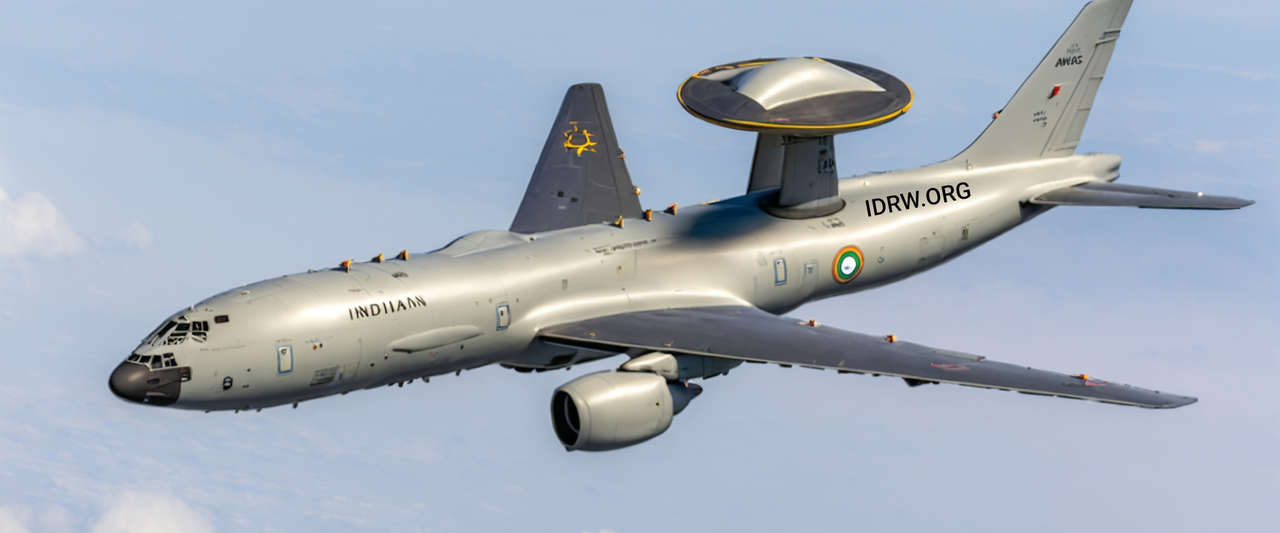SOURCE: RAUNAK KUNDE / NEWS BEAT / IDRW.ORG


The recent Request for Information (RFI) issued by the Indian Air Force (IAF) for six Airborne Early Warning and Control Systems (AEW&CS) has generated considerable interest and confusion. To clarify the situation, we at idrw.org will explain the different AEW&CS programs currently in development, including the Netra Mk1A, Netra MkII, and the long-term Netra MkIII project. While the RFI for six AEW&CS units involves advanced 360-degree surveillance technology, it is distinct from the ongoing Netra programs.
The IAF has received clearance for the procurement of six Netra Mk1A AEW&CS units, which will be based on the ERJ 145 airframe, a proven and reliable platform. The Netra Mk1A will feature an Active Electronic Scanned Array (AESA) radar, similar to the one used in the Netra Mk1, but with enhanced capabilities and upgrades. This radar allows for better detection, tracking, and surveillance, but its limited size on the ERJ 145 platform means that it covers a reduced range compared to future systems.
The Netra MkII program, which also received approval from the Ministry of Defence (MoD), will leverage the same AESA radar technology as the Netra Mk1 but is expected to be mounted on a more capable Airbus A321 platform. Netra MkII will feature enhanced surveillance and command capabilities due to the use of a larger airframe, allowing for greater operational endurance and sensor reach.
Developmental trials for both Netra Mk1A and Netra MkII are projected to commence by 2027, with final operational readiness likely around the early 2030s. The primary distinction between the two is the platform, as both will use similar radar technology, but the larger platform in the Netra MkII will provide greater range, endurance, and mission capabilities.
The confusion stems from the current RFI, which is for six AEW&CS systems featuring 360-degree 4D AESA GaN (Gallium Nitride) technology. This represents a significant leap in radar performance, offering a full 360-degree coverage compared to the more limited field of view of the Netra Mk1A and MkII. The GaN technology provides enhanced power efficiency, greater range, and the ability to track more targets simultaneously with improved resolution.
This advanced system is designed to be mounted on a larger platform—likely the Airbus A330 or A321—providing much greater operational capabilities in terms of range, payload, and mission duration. The Centre for Airborne Systems (CABS) under DRDO has already developed an ellipsoidal dome antenna to house the AESA radar for both primary and secondary surveillance. The dome, measuring 10.2 meters in diameter and 2.2 meters in height, weighs approximately 12.5 tons with electronics included and will be critical for housing the advanced radar system.
The Netra MkIII program is where the IAF will truly break new ground. Set for development after the Netra Mk1A and MkII programs, the MkIII will incorporate the most advanced radar technology developed by DRDO, including the new 360-degree 4D AESA GaN system. However, this program is still in its early stages, with the technology and platform requirements making it a long-term project. The Airbus A330 or similar wide-body platforms are being considered due to the size and weight of the system, but this also means the Netra MkIII will come at a higher cost and will take more time to develop.
The development of the Netra MkIII will involve integrating a composite Radome designed specifically for this system. The Radome, tested in a ground-based facility, is sized at 7209 mm x 2126 mm x 1787 mm and will house the integrated antenna panel for both primary and secondary radar, providing unparalleled surveillance and early warning capabilities for the IAF. Given the advanced technology and the need for extensive trials, the Netra MkIII is not expected to be operational until after 2030.
NOTE : Article cannot be reproduced without written permission of idrw.org in any form even for YouTube Videos to avoid Copy right strikes. Websites doing illegal reproductions will get DMCA and Legal Notices.